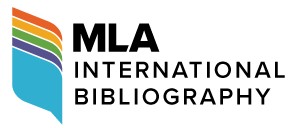Abstract
Since the Song dynasty, the touchun pattern has referred to the five-character metrical poetry in which the antithesis is used in the first couplet rather than the second; the fengyao pattern has referred to those in which the antithesis is only used in the third couplet. These two patterns began to flourish in the works of Shen Quanqi and Song Zhiwen. During the High Tang dynasty, they were equated in number with the standard format of metrical poetry. It was not until the Dali era that they were finally confirmed as variant formats of five-character metrical poetry. This trend of using free verse in metrical poetry corresponded with the development of antithesis theory. It showed that Tang poets, under the current of rhetoricism, broke out of the framework of dixiangzushu (continuation of the established disciplines and customs), drew on all the poetic resources since the Han and Wei dynasties, and returned to the essence of expressing emotions and aspirations. This was not only the key to the improvement of the quality of five-character metrical poetry, but also a cause of the later situation where five-character metrical poetry tended to be more ancient and elegant, while the seven-character metrical poetry tended to be more novel and popular.
Keywords
fengyao pattern, touchun pattern, five-character metrical poetry, rhetoricism
First Page
133
Last Page
146
Recommended Citation
Zhang, Zhao. 2025. "A Study of the Historical Formation of the “Fengyao” Pattern and the “Touchun” Pattern in Five-character Metrical Poetry." Theoretical Studies in Literature and Art 44, (6): pp.133-146. https://tsla.researchcommons.org/journal/vol44/iss6/14
Included in
Aesthetics Commons, American Studies Commons, Chinese Studies Commons, Classics Commons, Comparative Literature Commons, Film and Media Studies Commons, Modern Literature Commons, Theatre and Performance Studies Commons


